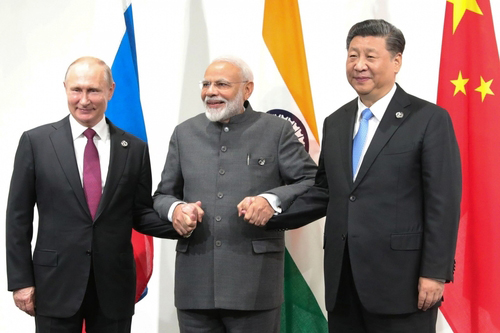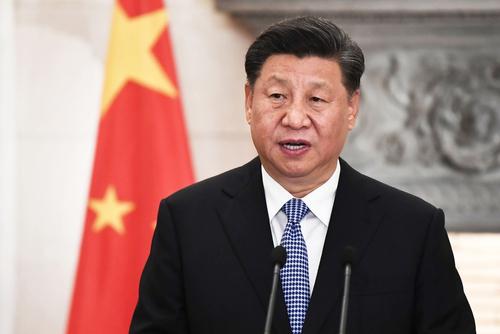The balloon brought down by an F-22 off the coast of South Carolina may be a harbinger of what PLA writings have called “a new battlefield” in near space. In these upper reaches of the Earth’s atmosphere, below the orbits of satellites but above the altitude of most winged aircraft, Chinese balloons have overflown more than 40 countries across 5 continents. Lacking an airborne strategic reconnaissance capability like the U.S. Air Force’s U-2, the PLA appears to have sought a low-cost intelligence collection platform so retro that it revealed gaps in the ability of the U.S. and other countries to defend their sovereign airspace. Intelligence gathering may not even be the most worrisome activity in the new battlefield. A close reading of PLA writings suggest that the United States and its allies and partners need to more fully consider how the PLA might deploy high-altitude balloons offensively in wartime scenarios.
The technological specifications of the balloon — which Beijing still insists was on a meteorology mission — reveal their strategic capabilities. The Chinese balloon exceeds the size, payload and flight time of normal weather balloons. It has been described as 200 feet tall, with solar panels and a surveillance payload the size of a regional jet, weighing more than 2,000 pounds. Aerostar, a U.S. company that manufactures balloons similar to the type of balloon shot down off the coast of South Carolina, advertises its balloons as “filling the capability gap between aircraft and satellites” by being capable of conducting intelligence, surveillance, and reconnaissance (ISR) and other missions “for months at a time.” Typical weather balloons, in contrast, carry a payload of just 200 grams for a flight time of a couple of hours. According to the U.S. government, the People’s Republic of China balloon payload consisted of “multiple antennas to include an array likely capable of collecting and geolocating communications,” suggesting that the main purpose of the balloon was signals intelligence.
Filling a gap in strategic reconnaissance capabilities
High-altitude spy balloons appear to fill a gap in the PLA’s strategic intelligence, surveillance, and reconnaissance (ISR) capabilities. While the U.S. military conducts airborne reconnaissance missions in international airspace off the coast of the People’s Republic of China and in the South China Sea, Beijing has no such capability against the United States. The PLA Air Force does maintain several types of airborne early warning and control aircraft that have an inherent intelligence collection function. But it has only one dedicated electronic intelligence aircraft, the Y-8, and it lacks the range to get to Guam and back, much less the continental United States. Moreover, with only one overseas base in Djibouti, the PLA lacks access to airfields from which to operate these platforms more globally.
The People’s Republic of China does, however, have the world’s second largest fleet of satellites, after the United States. With nearly 600 satellites in orbit, 229 of them ISR satellites, China’s space program is likely its main source of strategic surveillance. But PLA perceptions of the intention of the U.S. military to achieve space dominance against the People’s Republic of China may have led the PLA to pursue high-altitude balloons. Fearing that the U.S. military would take out its satellites during an armed conflict, the PLA may be seeking to use high-altitude balloons as a backup to a degraded space-based remote sensing system.
In fact, balloons of the type that flew over the United States offer some advantages not found on other types of intelligence collection platforms. Unlike satellites in low Earth orbit that revolve around the globe every 90 minutes, the balloons can loiter over a location for long periods of time. This allows for extended views of the target or time to monitor communications or other electronic signals, such as those emitted by radar.
The balloon’s track has led to speculation that the balloon attempted to collect intelligence on the 341st Missile Wing, a unit responsible for 150 missile launch sites spread out over 13,800 square miles in Montana. The People’s Republic of China is conducting a massive expansion of its nuclear force and could have as many as 1,500 nuclear warheads by 2035. This has generated concern that it may be considering a more offensively oriented nuclear policy. Collecting intelligence over Montana may have been part of an effort to know more about the U.S. nuclear force makeup in order to better target or counter U.S. nuclear forces in the case of nuclear war.
A wartime use for balloons?
PLA writings on the use of high-altitude balloons and other “near space” vehicles reveal an interest in exploiting this domain for strategic military purposes. A 2018 article in the PLA Daily calls the upper atmosphere where balloons like the People’s Republic of China spy balloon operate a “new battlefield.” It notes that balloons do not present a large radar or infrared signature, so they are not as easily detected as other types of aircraft. And most planes and surface-to-air missile systems are not designed to effectively intercept them. PLA researchers writing in a 2022 article in the journal Shipboard Electronic Warfare argue that balloons are a low-cost alternative to other platforms, well-suited to conducting ISR. It also notes that balloons can be used to extend communications over the horizon.
But most surprising may be the PLA researcher's discussions of using balloons in offensive operations. PLA researchers write about near-space vehicles, possibly including high-altitude balloons, as kinetic strike platforms. According to the 2018 PLA Daily article mentioned above, the possibility of conducting strikes from near space against ground targets and targets in space has great potential. A 2021 PLA Daily article also notes that balloons can be used as launch platforms for rocket and missiles. Missions like these are not beyond the realm of possibility. The Japanese military in World War II used balloons armed with incendiary devices in a failed attempt to start forest fires in the western United States. The invention of precision-guided munitions could turn this once-discredited tactic into a viable option.
According to the 2022 journal article, balloons can also act as decoys to exhaust enemy air defenses in swarm operations that require the defender to use expensive missiles and aircraft to down them. Reminiscent of “barrage balloons” used during World War II, the article even posits that balloons could be used to interfere with intercepting aircraft in enemy airspace. The article also states that balloons can be used offensively in electronic warfare and psychological warfare missions.
A potential outcome of China’s global high-altitude balloon program is the capacity to complicate the air and missile battle during wartime. Swarms of balloons sent against the United States and its allies and partners during wartime could divert limited resources away from defending against air and missile threats to deal with the balloon threat. Whether the balloons were equipped with an ISR or strike payload, the United States and its allies and partners would have to honor the threat by deploying aircraft and missiles to intercept and shoot them down before they reached their intended target. Again, this has a historical corollary. The 1942 Doolittle raid resulted in a similar outcome. The relatively small U.S. attack against Tokyo and other cities prompted Japan to redeploy four fighter groups for the defense of the Japanese islands at a time when they were needed in the South Pacific.
Swarm tactics may also have their peacetime uses. China could use balloon flights in U.S. airspace to protest violations of what it considers its sovereignty. As indicated by the shootdown of multiple objects over the United States and Canada since the February 4 shootdown of the spy balloon, such tactics could consume the time, resources, and attention of the U.S. government in an attempt to inflict costs on the United States.
The overflight and shootdown of the Chinese spy balloon evoke memories of the Cold War and highlight the tense environment in which strategic competition between the United States and China is taking place. China’s spy balloon program likely represents a continued effort by the PLA, started in 1999, to develop asymmetric means to counter or overcome U.S. military capabilities — and demonstrates the creativity and breadth of that effort. The spy balloon episode also exposes the domain of “near space” as a new arena of strategic competition that the U.S. did not fully realize was in play. It’s a battlefield that U.S. military planners may need to consider in future military operations.



